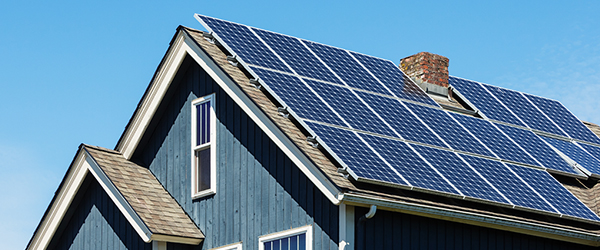Smarter Energy and Smarter Home

You know that there are plenty of ways to make your home smarter and more energy efficient. And chances are, you’ve already implemented some of these practices into your daily life.
As technology becomes more sophisticated, Artificial Intelligence improves, and home energy devices become more widely used, people are finding ways to be less dependent on how they use traditional energy services, and become more in control of how they use energy in their homes.
There are three key changes to the energy landscape that are completely changing the way people get, store, and use their energy. And at IGS, we’re pretty excited them.
Energy Generation
Energy generated by solar, wind, hydro, geothermal, and other renewable sources is becoming more affordable and accessible for just about any home or business owner to take advantage of. There are so many reasons for individual homeowners to consider installing solar on their own homes, and that trend will continue in the coming years with the expansion of incentive programs and decreasing solar panel system costs.
Companies like Google, and its Project Sunroof, are making it easier for consumers to realize the savings potential of solar panels at particular addresses. The tool estimates the technical solar potential of all buildings – and homes – in a particular region, all the way down to a specific address. “Technical potential” refers to the amount of sunlight that reaches a roof (on average) and ensures the structure has a roof large enough to support an installation. Insight from Project Sunroof is available for the majority of cities across the U.S., allowing millions of homeowners to understand the potential benefit solar could have on their homes and budgets.
Energy Storage
The race to find an affordable source of home energy storage is on, and many companies are emerging with solutions that can be installed at a single home or scaled to benefit an entire apartment complex. As renewable generation becomes a bigger part of our national energy profile, the ability to store excess energy generated from renewables is key to benefit the grid in coming decades.
Companies like EnSync have developed a system that exchanges electricity in real time via its Peer-to-Peer energy network technology, named DC-Link. In this network, when a residential solar system generates more energy than a home needs, it will charge the home’s storage battery to be used in the near future. Once that battery reaches its full capacity, any additional generated energy will be transferred through the DC-Link platform to charge other residential units.
Energy Monitoring
Energy monitoring is one of the most accessible technologies to help you understand how and when you use energy in your home. With the expansion of utility-scale smart meter installations comes greater potential to understand how you use energy in your home. Energy monitoring devices can use smart meter and individual appliance-level data to provide clarity and insight on how you can shift and reduce energy usage in your home. If you’re interested in this technology, here’s a full list of devices for you to consider.
IGS Knows that Smarter Energy Matters
Whether you’re looking to take control of your energy budget with a fixed rate product, protect your home’s utility lines, pipes, and wires, or add a solar panel array to your roof, IGS is here to help with curated solutions for your home and business.
Are you interested in learning more about residential solar?